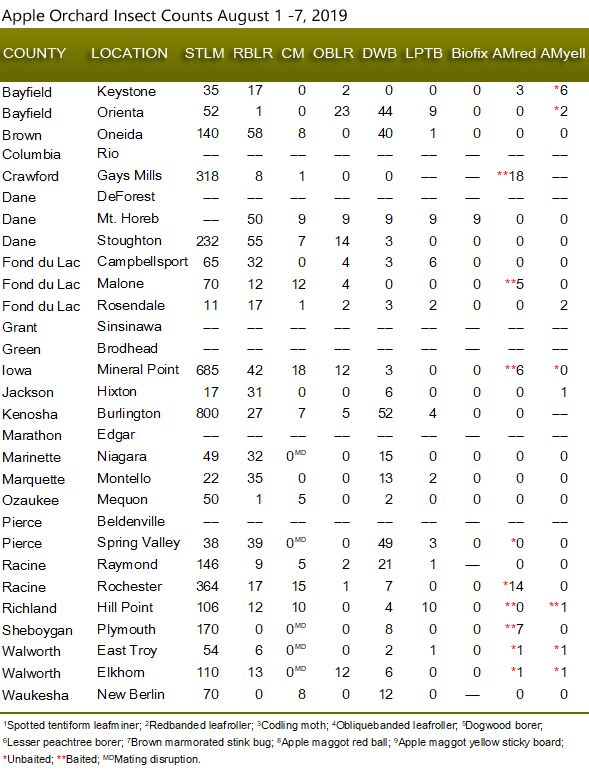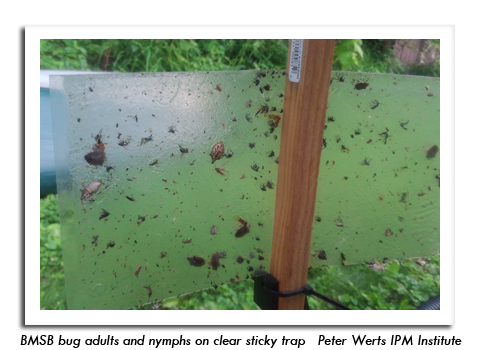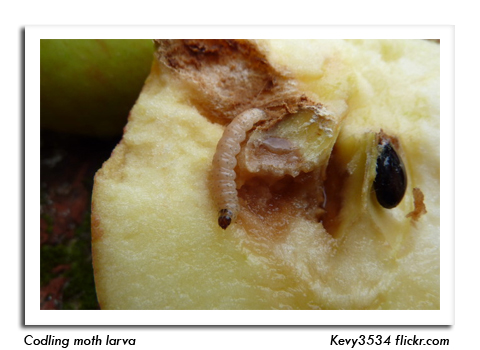
 |
|
|
Fruits
Volume 64 Number 15 Date 08/08/2019 BROWN MARMORATED STINK BUG - Nymphs and adults are appearing on survey traps in Dane and Rock counties. For apple orchards where BMSB is known to be established, it is particularly important to be alert for late-summer populations and fruit injury. Most BMSB feeding occurs at night, so the stink bugs may not be as noticeable during the day. In addition to the clear sticky traps, growers monitoring BMSB this season should also watch for BMSB adults near lights as an indicator of stink bug pressure. In eastern states where BMSB is a severe orchard pest, damage to apples has been misidentified as cork spot and/or bitterpit, disorders related to calcium deficiency. As populations of this pest continue to increase and spread in Wisconsin, on-site monitoring will be the best determinant of whether or not treatments targeting BMSB are necessary. An economic threshold for clear sticky panel traps is not yet available. However, USDA-ARS Research Entomologist Dr. Tracy Leskey has specified a provisional threshold of 10 BMSB per week for black pyramid traps to apply an alternate-row-middle spray, noting that the occasional BMSB caught in traps may not warrant BMSB sprays and growers should wait for sustained captures. CODLING MOTH - Reports from cooperating orchards indicate variable CM pressure. Economic counts of 5-18 moths were reported this week from 10 sites, while seven locations reported low counts of 0-1 moths (mating disruption sites excluded from counts). Summer codling moth pressure is often a direct indicator the efficacy of spring generation management programs. Monitoring of pheromone traps is recommended until the end of the month to determine the need for late-season CM control. Spot treatment may be appropriate for blocks where trap counts remain above the economic threshold of five moths per trap per week. An insecticide application is not necessary if trap counts do not exceed this action threshold. Growers are reminded to review pre-harvest intervals before making an application. APPLE MAGGOT - Emergence has peaked in all but the far northern counties. The high weekly count of 18 flies per red sphere trap was reported from Gays Mills in Crawford County, while 11 of 22 reporting orchards registered economic captures of flies (1 fly per unbaited trap or 5 flies per baited trap). Apple growers are advised to maintain traps through the first week of September and continue apple maggot sprays as long as the flies are being captured and counts exceed established thresholds. -- Krista Hamilton, DATCP Entomologist 
.jpg)



|
|
|